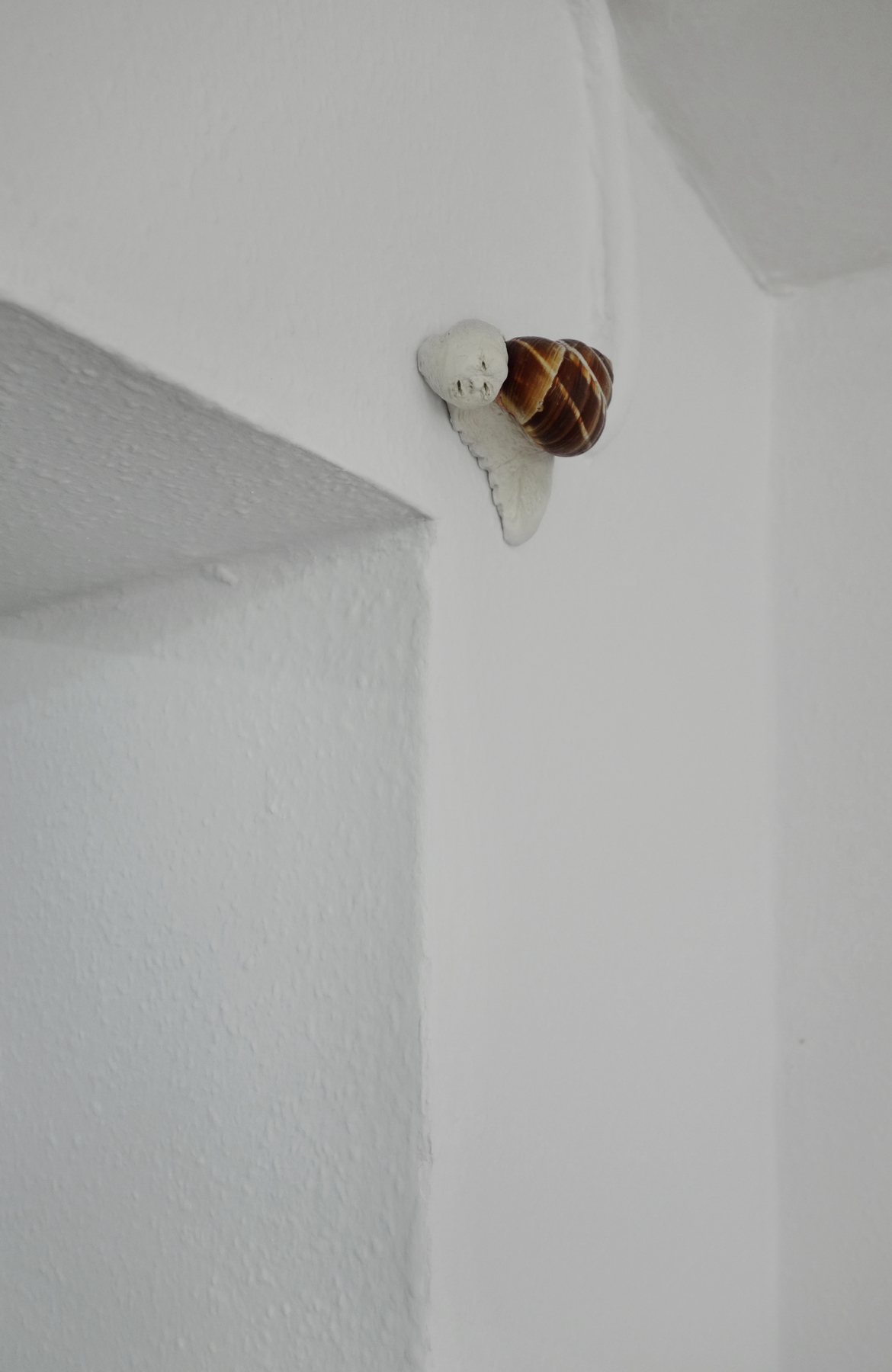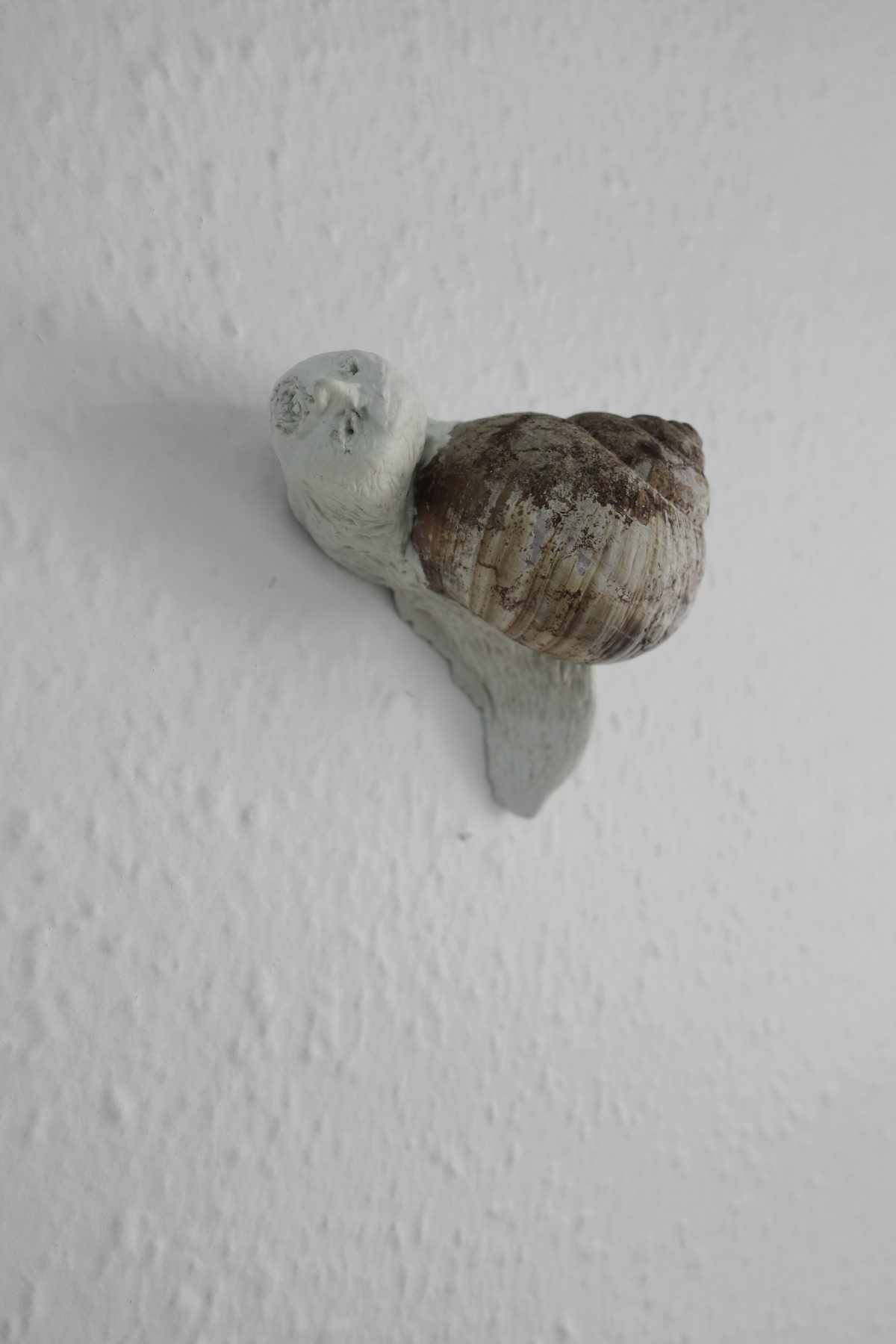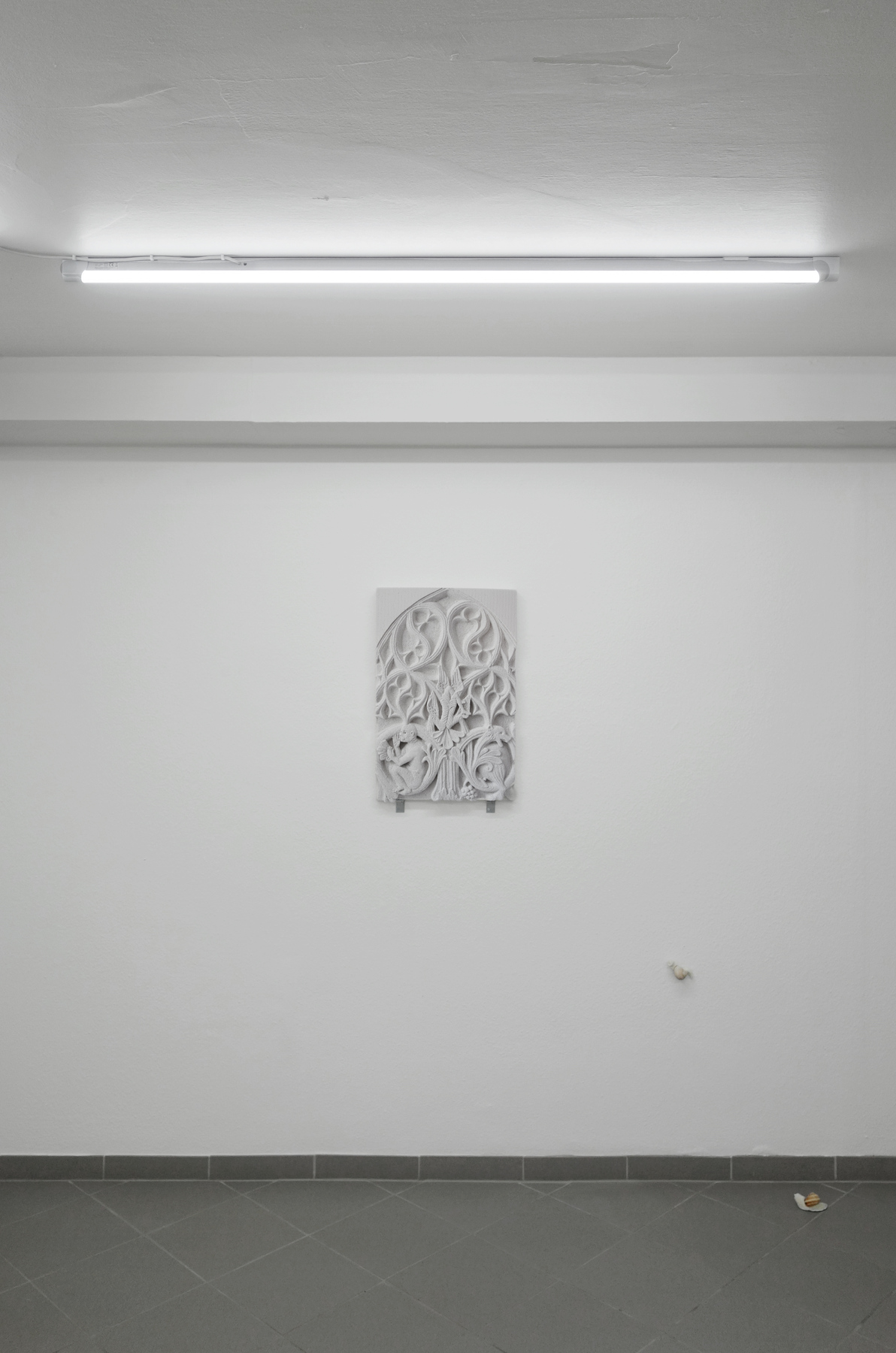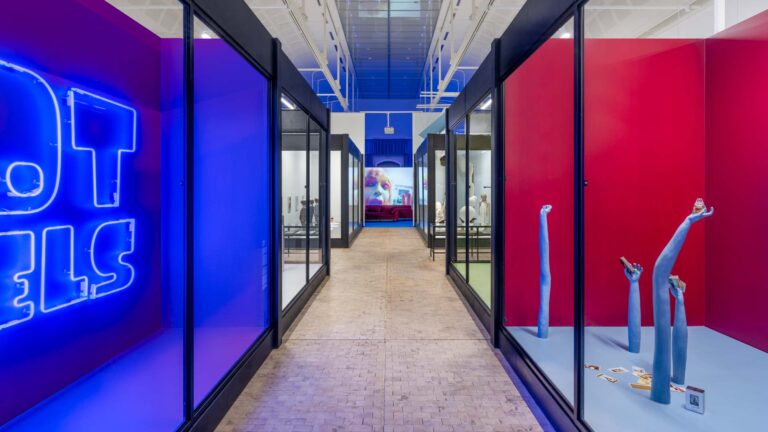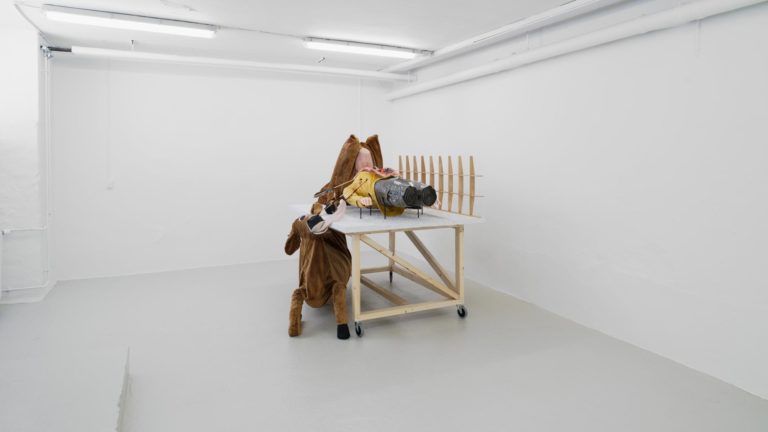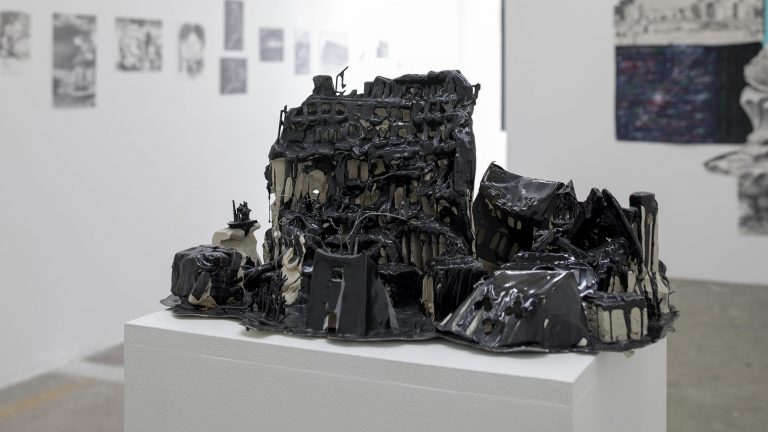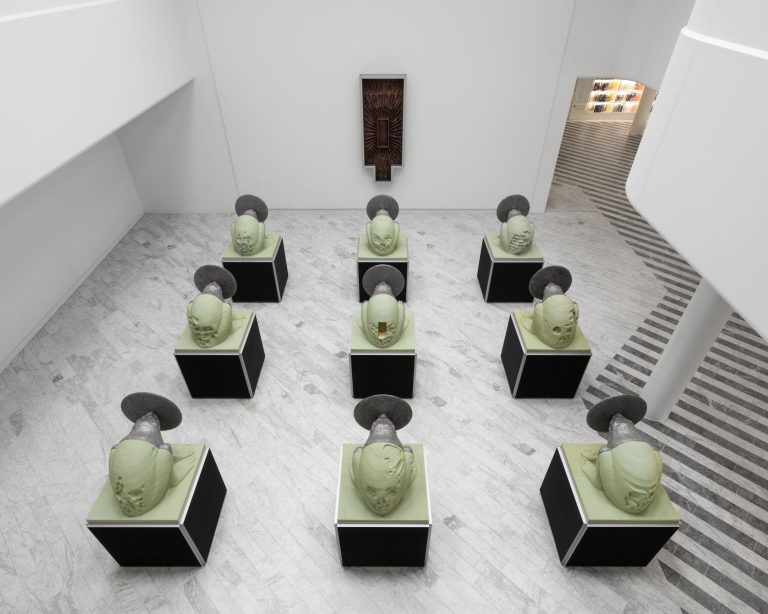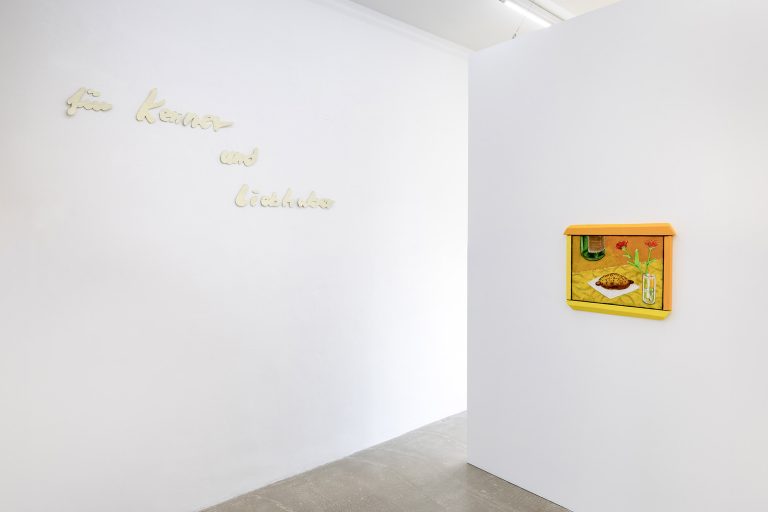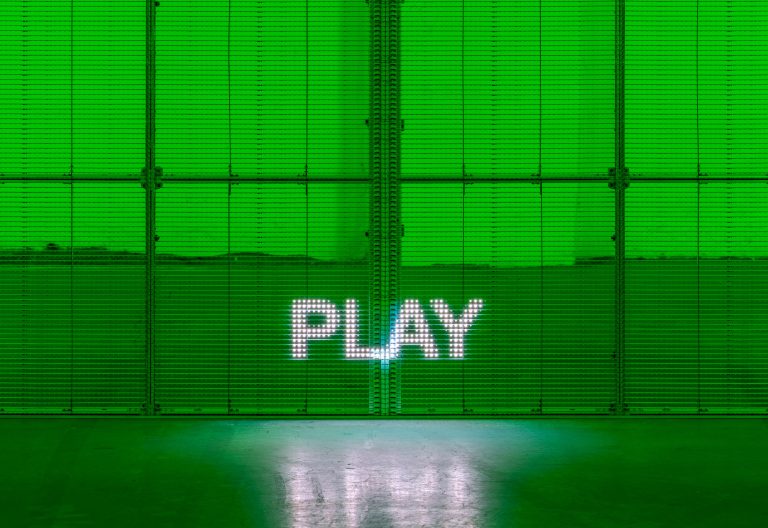Artists: Asbjørn Skou & Sif Itona Westerberg
Exhibition title: Sing us a morning of light, feathers and scales
Venue: M100, Odense, Denmark
Date: May 4 – 30, 2018
Photography: all images copyright and courtesy of the artist and M100, Odense
“bodypanic. When sliding the hands down across ones torso, fnding rattling scales, across the abdomen and feeling feathers, teeth of precious metals, feet of sour clay. Beast. With tail and days being consumed as smog. And all your love is smashed down through the throat, down in the cemented ravine, sounding like gurgling mud, an autostrata of small rockslides. Discernments and devourings of the landscape, no the language, like “hey, this here is our luminous ghosts.” They are stuck in the moor and bog, are unrecognisable from the singing mass of the landscape, spectres of so much alkaline earth, neon heather, heavy in the gullet, bags of pus falling down into the speech, as the clothes that is shed from the new bodies, on the old shining moor. Midnight, midnight, midnight in the nauseating interior. Snake spirits and radioactive clouds sinking down through the haunted heathland. Here walking, the remains of Capital Life; unspectacularly discarded things. Scrap. Mephistopheles in the thicket, of scales and feathers and tar between rays of light and the small stones. Some of the stones are shaped like dolphins, and others as a human face. Others have organic flaments or veins of quarts, aligned like access roads, into other ages, other possible worlds. Worlds for those that has feathers and scales, and who sings, sings. Through the pale coral reefs, DOWN through the gorges with the singing beasts. Some things just won’t die. But much rather multiply, pour out in all too much becoming, obscene emergence of life. Beings from a future only ft for monsters. A gluttonous economy of entangled limbs, bodies tumbling through bodies, across a moor of tar and pus, aluminum and light. A trauma-ground. Inside and outside, the bodies of scales and fathers. Become other! Become many! Become molocular! Singing beasts on the alkaline moor; we were never holocene. Now, now, midnight, indecisive space. Squelching carbon and nitrogen fxation, basis for the life of the moor, vengeful tar-sands below the heather, tellurian ghost. These bodies – of loot, sick bodies, of pus and plunder, deathship. Sing us a morning of light, feathers and scales.”
The word Monster, derives from the latin Monere: to warn. Among many things, the monster is a warning – not just about what could occur, but also about what has happened and is happening. The monstrous is a dialectical chock-image, an archaic cultural agent, operating in the divide between benign and malignant otherness. It resides in the hybrid and unstable, in borderlands and outer zones. The monster, with its extreme corporeality, with all its grotesque and sublime catastrophe; all its deformations and estrangement; its superiority and inferiority. The monster speaks (gurgles, sings, roars and whistles) about the body as a site of entanglements; about interlacings between an internal and external ontological catastrophe, a disaster site. But also a ground for continuous becoming, a new primordial soup. As a cultural agent, the monster becomes what it eats; weatherings and transformations in the divide between animal, human, plant and mineral, outside of category and gender, in a constant state of metamorphosis, as embodied otherness, liberating and alienating. It is increasingly returning to us now – from the moors and woodlands, the caves and crevices, from the ocean and earth; to speak about the anthropocene. This age of massive manmade transformation of planetary ecosystems and interruptions of the connections between many-species life. The monster speaks (rumbles, howls, gobbles and clicks) both about symbiotic wonders and devastating threats. From multifaceted origins, hybrid coexistence and ecological connections; to invasive species, malignant pathogens, chemical processes out-of-control and defnitive extinctions. The monster has with it a double meaning: on the one hand it shows us chimeric entanglements, an other-than-human life; and on the other hand it points towards, how we, modern humans, in our heedless relations to more-than-human life, ourselves are becoming monstrous.
Asbjørn Skou is a visual artist from Copenhagen, Denmark. He works with drawings, text, and objects, to stage and examine relations between human and nonhuman agencies, and their possibilities for production of crisis and critique. His praxis forms fctions on spaces of interaction, to negotiate and digest political, cultural and historical realities. He holds a MFA from the Academy of Arts in Bremen, Germany. He has previously exhibited at among other; Overgaden Institute of Contemporary Art (DK), Kunsthal NORD (DK), Kunsthall Trondheim (NO), Tranen – Contemporary Art Centre (DK), Museum of Cycladic Art (GR) Vejle Art Museum (DK), Ileana Tounta Contemporary Art Centre (GR), Munch Gallery (USA) Contemporary Art Museum of Estonia (EST), Photographic Centre (DK) Rauma Art Museum (FL). www.asbjornskou.com
Sif Itona Westerberg is a visual artist living and working in Copenhagen. She graduated from the Royal Danish Academy of Fine Arts in 2014. She works primarily within the sculptural feld through which she studies new ecologies, relations and aesthetics in the Anthropocene era. She has, among other things, exhibited at the Aros Triennial; The Garden (DK), Sculpture Triennalen; Becoming Human (DK), The House of Arts and Design (DK), Gallery Jacob Bjørn (DK), New Shelterplan (DK), Kunsthal Nord (DK), Nam Project (IT), Sixtyeight Art Institute (DK), Westverk, Martin Asbæk Gallery (DK), Kunsthal Charlottenborg (DK). www.siftona.com
-Text by Asbjørn Skou





